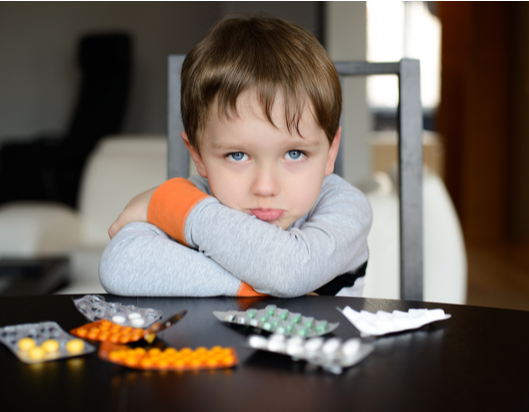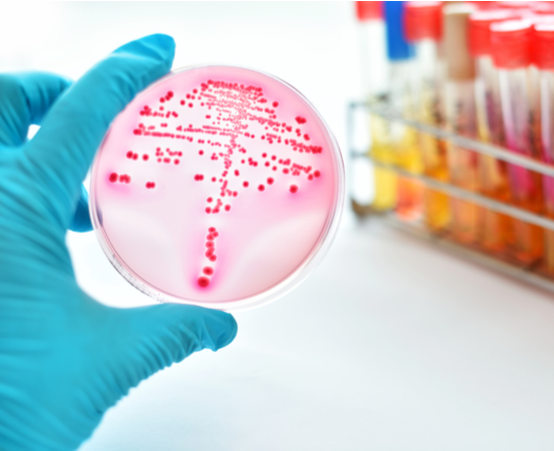Antibiotic resistance

Antibiotic resistance is a huge healthcare challenge. Overusing antibiotics creates ‘superbugs’ – bacteria that have become resistant to treatment. This makes it hard or impossible to treat infections.
Antibiotics save lives and are the foundation of modern medicine. They allow doctors to treat and prevent bacterial infections every day in thousands of children and provide safer surgeries, organ transplants, cancer treatments and intensive care.
But every time a child receives antibiotics, whether appropriately or not, there is a risk. For individuals, antibiotic use can cause side effects, prolonged hospital stays and longer-term health harm. For the community, antibiotic use drives the development of bacterial resistance, making it difficult or impossible to treat some infections.
When antibiotics are overused, especially in children, we expose them to avoidable risks. We need to preserve this resource and safeguard the health of future generations by reducing the need for antibiotics and using them more carefully when required.

Who does it affect?
Who does it affect?
- Infection is one of the most common reasons children visit a doctor.
- Many receive antibiotics for viral infections despite antibiotics being ineffective for viruses.
- Australian infants use a great deal: half receive antibiotics by age one and over 80 per cent by two.
- Early-life antibiotic overuse is linked with poorer health later, including obesity and asthma.
- Overuse drives the development of antibiotic resistance, endangering the ability to treat common infections and do life-saving surgery and transplants. The World Health Organization has declared antibiotic resistance as one of the top 10 global public health threats facing humanity.
Our antibiotic resistance research
Our antibiotic resistance research
Murdoch Children's Research Institute is researching the best ways to use antibiotics. Our aim is that every child can receive precision antibiotic therapy to minimise antibiotic resistance.
We are determining the prevalence of antibiotic resistance in Australian children. We aim to track how resistance spreads through the community, identify hotspots and develop interventions to tackle the problem.
Hospital may not always be the ideal place to give antibiotics, so we are researching alternatives to deliver better outcomes such as treating children with acute infection at home, shortening antibiotic courses and switching to oral.
We are researching better ways to use antibiotics to fight infections in childhood cancer and other vulnerable populations.
Giving the right dose of antibiotics to every child is important and we are developing new approaches to monitor medication levels in the body.
We are using health data to understand the long-term outcomes of the timing of antibiotic use, including during pregnancy and early childhood.
Our team is researching how antibiotics and other factors affect the function of the immune system and the gastrointestinal microbiome – the helpful and harmful bacteria living in the gut that are crucial for health.
We are researching better ways to manage infections in disadvantaged populations to reduce the need for antibiotics.
Impacts of our research

Impacts of our research
- We are a part of a study that found that intravenously administering antibiotics to children at home is as effective and safe as hospital treatment. It is also better for their quality of life when treating bacterial skin infections. This helped form national guidelines on the duration of IV and oral antibiotics for children with bacterial infections.
- Found that a high proportion of children in the community receive antibiotics in the first two years of life and that many receive antibiotics unnecessarily for infections that were caused by viruses.
- Linking antibiotic use during pregnancy to the risk of serious infection in childhood. This suggests that antibiotics may disrupt the mother’s microbiome (gut bacteria, viruses and fungi), leading to long-term consequences for their infants.
- Developing new treatment pathways for children with cancer by identifying those at low risk of severe infection. These children can receive fewer antibiotic treatments – reducing their risk of resistance and allowing them to leave the hospital earlier.
- We found that improving dosing for individual patients for several antibiotics produces more effective treatments and better outcomes. These changes fed into updated guidelines on the use of commonly prescribed antibiotics in children.
Our vision
Our vision
Our vision is for every child to receive the best care through precision antibiotic treatment. We aim to optimise antibiotic use to reduce resistance and improve child health.
Where to next?
Where to next?
The next steps will be to collate all the knowledge we are gaining about how, where and in which children, antibiotic use is linked to resistance and other poor health outcomes. Using these large learnings, we will develop and implement interventions to prevent or reverse the negative impacts of antibiotics, preserving this medical miracle for future generations of children.








